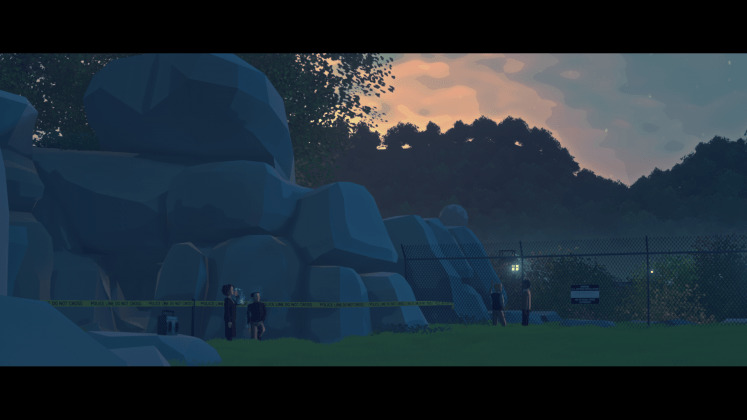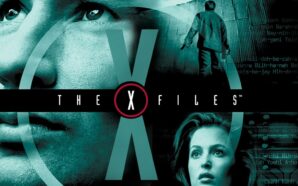Another great article from guest author Duncan Parsons. Read on for his thoughts on Virginia, and find out how you can reach him at the end! Be warned, this article contains spoilers, which we have marked up later in the piece.
I played through Virginia a few days ago. Since then, I’ve thought about it a lot. Many idle moments and the odd morning commute have been spent pondering this peculiar little game, and most of all its seemingly ambiguous, even obscure, ending.
For those entirely unfamiliar with Virginia, developed by indie studio Variable State and backed up by a wonderful soundtrack performed by City of Prague Philharmonic Orchestra, it’s a game ostensibly about an FBI agent, Anne Tarver, looking into a missing person case in the small town of Kingdom, Virginia, while simultaneously conducting an internal investigation into her new partner, Maria Halperin. With some clear influences from the likes of Twin Peaks and the X-Files, however, often it appears something more strange is afoot.
Or is it? Combining the kind of gameplay typical of (often disparagingly named) ‘walking simulators’ with jump cuts more common of film and TV, Virginia marches its’ narrative forward at a pretty slick pace. Often this simply saves you guiding Tarver down an entire corridor or down multiple sets of stairs when only a brief glimpse of this is needed for the player to understand that the protagonist is making her way to a basement office. Later though, this editing mechanic starts to prove a little more disorientating. Cutting from events presumed to be happening in the present to flashbacks, to dream sequences and back again, things begin to blur. Adding to this is the total absence of spoken dialogue in this game, leaving only characters actions, expressions and the odd bit of text as means to decipher what’s actually going on.
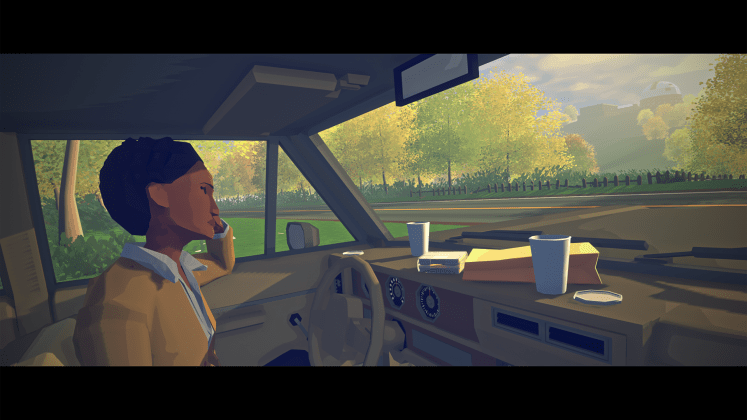
Imagery, too, leaks between the waking world and what your FBI agent sees as she dreams about the day’s events at night. A recurring motif of a red bird is particularly notable and open to interpretation because of its improbable – sometimes impossible – appearance during sections of the game which would seem to be set in the present, ‘real’ world.
As the credits rolled, and I desperately tried to make sense of what I’d just seen. I was keen to do a little investigating of my own. A few theories were forming, but I sought validation or at least some kind of explanation, so a looked to the net. It was then I realised how little consensus (if any) there was about what the hell was going on in Virginia. The makers themselves have remained tight-lipped about the game, with writer/designer Jonathan Burroughs only saying that the tale Virginia tells is a “terribly sad” one in an interview with Polygon, and expressing surprise that most interpret the ending to be fairly upbeat and positive. This was enough for me though, and it made me consider my initial theory in greater depth. After all, the major difference between my own interpretation and those of others was that my take was perhaps far more melancholy.
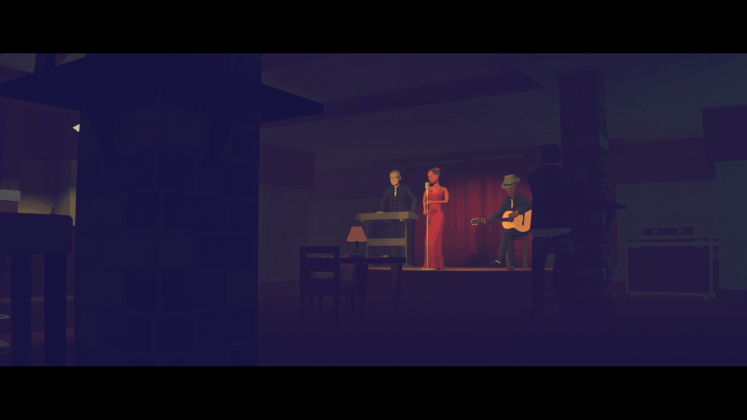
From here I’m going try desperately to explain my answer to the question of the game’s ending, and in the process go into a bit more depth about plot specifics. If you’ve not played Virginia, are spoiler-averse, and/or want to go into this game blind (which I highly recommend), stop reading here and come back later. I’ll wait.
[SPOILERS FROM HERE]
As you progress through the game’s running time, roughly that of an average film, Anne Tarver learns more about goings-on in the town, the people surrounding the missing boy, and her partner Maria. The two agents clearly become close as Tarver discovers more about her fellow agent’s past, motivations, and the reason she’s the subject of an internal investigation. Halperin inadvertently discovers that Tarver has been investigating her, and the two part ways. Anne goes on to discover that the other agent appears to be on the verge of uncovering some internal corruption or conspiracy within the FBI (presumably why she has found herself under the Bureau’s scrutiny). With this knowledge, Tarver finds Halperin and appears to throw away the case she has built against her in a bid to win back her friendship.
Cut to both agents in jail. Watched over by the local sheriff and visited by the FBI director, It’s from here the plot quickly begins to unravel. We see a vision of the future Tarver as she quickly rises through the ranks of the FBI by conducting one internal investigation after another, making friends with new agents then ‘selling them out’ in favour of promotion, until her older self is in the Director’s chair. We see various images cut from one another in quick succession – not all of which I can fully explain even now – and we’re treated to a drug-induced, psychedelic journey.
Many seem to infer that the events through which you control the younger Anne Tarver post-jailing are the real sequence of events, and that the flash forward to her older self as she progresses her career is her simply imagining how things could have gone if she’d been more ruthless. My own was the opposite. I came away from Virginia under the belief that, having been jailed and needing a way out and a way to continue her career, Tarver had completed the investigation into her partner after all. Sacrificing her friendship as well as the chance to really find out what had happened to the missing boy, she chose the path of career advancement. At the end of the sequence showing Anne’s progression to the top of the FBI, she glances over an ‘unsolved’ case file in a bright red binder. This is the case you spend much of the game investigating alongside Halperin.
The colour, bright red, supports this theory further. The bright red bird, appearing frequently in places it couldn’t possibly be, even rising from the dead, all happens during the ‘waking’ period of the game you play through. This suggests that the daily progress of the investigation is just the older Tarver looking back. In some of the dream sequences too, we play through what seems like an out-of-body experience for Tarver, she can see herself sitting on her bed – what appears to be her grey-haired older self.
The red bird is a manifestation of the red unresolved case file seeping into Tarver’s reminiscences. When we jump back to her time in the cell for the drug trip, she takes the drug from a red envelope – red perhaps representing the agent’s regrets, the things she never did but perhaps wished she had. The more hopeful scene that closes the game out, with Anne and her partner driving away, passing the missing boy leaving town may well have just been the jaded, older Tarver looking back at what might have been.
All this certainly suits the “terribly sad” description from Virginia’s designer, but I must admit it leaves out so many other details which I simply can’t make sense of. Some have argued the game’s ending is just nonsensical, throwing out symbolism for symbolism’s sake in a rough homage to the work of David Lynch. Me though? I would argue that the way in which a player can take away almost anything from the game is its greatest strength, everyone perhaps coming away with an interpretation that says more about them than anything explicitly laid out in Virginia’s plot.
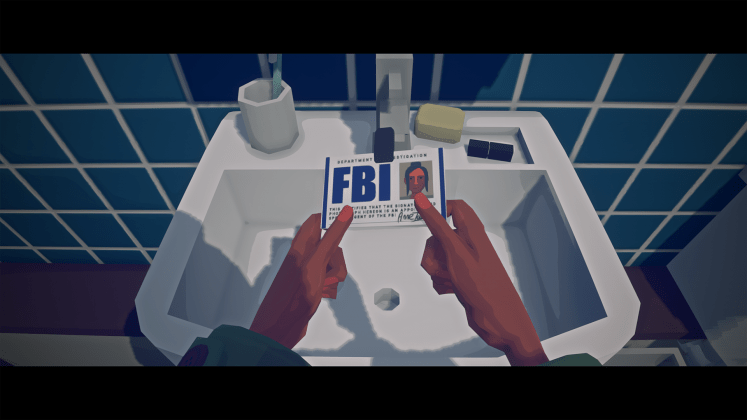
Virginia is a very linear game, with only one possible sequence of events, but it arguably has multiple endings. It just depends who’s playing.
This piece comes to us care of guest author, Duncan Parsons. If you like what you see, and would like to see more – let him know! You can find Duncan on Twitter @Duncan2501 or leave a message in the comments.




